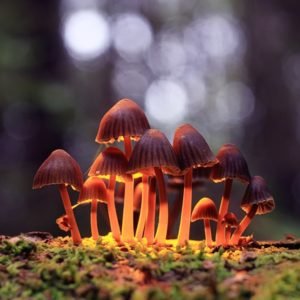Dimethyltryptamine (DMT), sometimes called the “spirit molecule,” has moved from the shadows of underground psychedelic culture into the broader public conversation. Traditionally used in Amazonian shamanic rituals, DMT is now gaining attention among young people, researchers, and wellness enthusiasts across the globe. Its reputation for inducing powerful, short-lived but profound hallucinatory experiences is fueling curiosity. But the rising popularity of DMT also raises questions about legality, safety, and …
What Is DMT and Why Is It Trending?
DMT is a naturally occurring psychedelic compound found in certain plants and even produced in small amounts within the human body. For centuries, it has been consumed in ceremonial contexts through ayahuasca, a brew that blends DMTcontaining plants with inhibitors that prolong its effects.
Today, DMT is often consumed through smoking or vaporizing, which produces an intense but short-lived trip — usually lasting less than 20 minutes. The brevity of the experience appeals to modern users who may be wary of committing to longer psychedelic journeys like LSD or psilocybin. The rise of podcasts, documentaries, and online communities has amplified awareness, framing DMT as a unique gateway to mystical or spiritual exploration.
Another factor behind the surge is the broader “psychedelic renaissance.” With increased scientific research on psychedelics for mental health, curiosity about substances like DMT has grown. Enthusiasts often describe encounters with otherworldly beings, deep insights, and feelings of transcendence, sparking cultural intrigue.
Risks and Misconceptions
Despite its growing popularity, DMT is not without risks. Physically, it is considered less addictive than many substances, but its psychological intensity can be overwhelming. Bad trips can trigger panic, disorientation, or lingering anxiety. For people with underlying mental health issues, such as psychosis, DMT use can be especially dangerous.
Legally, DMT remains classified as a controlled substance in most countries, meaning possession and use can lead to criminal charges. While ayahuasca ceremonies are legal in some contexts due to religious protections, recreational use is not widely permitted. Many users underestimate these legal risks.
There are also misconceptions about DMT being a “shortcut” to enlightenment. While some report profound personal growth, others leave experiences confused or unsettled. Without proper preparation and integration, the insights gained may be difficult to apply in daily life.
Looking Ahead
The rising popularity of DMT underscores the need for informed dialogue. Researchers are beginning to explore its therapeutic potential, though it remains far less studied than psilocybin or MDMA. As public interest grows, there will likely be calls for nuanced policy reforms that balance harm reduction, cultural respect, and medical research.
Conclusion
DMT’s newfound popularity is reshaping how society views psychedelics. While it offers unique experiences, the hype should be tempered with caution, education, and respect for its cultural roots. Awareness of both risks and potential benefits is essential as this once-obscure substance moves further into mainstream conversations.

